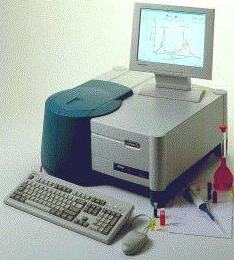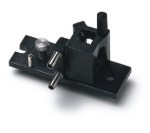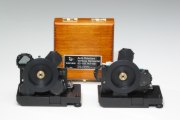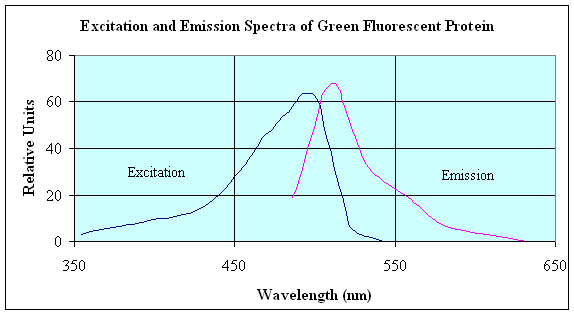The Interdepartmental Equipment Facility
Fluorometer.

The Cary Eclipse Fluorometer from Varian Inc. is used for measurement of fluorescence, phosphorescence and bio / chemiluminescence. A xenon lamp is set to flash periodically at a rate of 80 times per sec, serving as light source for the excitation monochromator. The monochromator selects the wavelength at which the sample is excited, from a spectral range between 200 and 900 nm.
Fluorescence, induced by the exciting light beam, is filtered by the emission monochromator, which selects the wavelength to be measured by the detector. The emission monochromator has a similar spectral range of 200 to 900 nm.

Sample-Holding Accessories:
The Single sample holder houses standard cuvettes with a light path of 1 cm. Be sure to use a four-clear-side cuvette, and it should be UV-transparent if you are going to use this spectral range. The cuvette holder is Electro-thermally thermostated by built in peltiers and the solution can be magnetically stirred.

The Automated Polarizer accessory for the Varian Cary Eclipse can be used in fluorescence polarization applications. The accessory consists of two motorized mechanisms in which the vertical and horizontal polarizers are mounted. The mechanism moves automatically out of the optical path when not in use. The useable wavelength range is 275-750 nm and it can be used for polarization-dependent wavelength scans, for single point reads and for time-based assays.
The Cary Eclipse has several operating modes:
Simple Read. Steady-state fluorescence intensity is measured at pre-fixed excitation and emission wavelengths.
Advanced Read. The Eclipse can be set up to take multiple readings and obtain mean measurements.
'Ratio' is used to measure parallel changes in intensity at two different wavelengths.
Kinetics Mode is used to measure changes in fluorescence as a function of time.
Lifetime Mode is used to monitor the decay of a phosphorescence signal following a flash of light.
Concentration Mode. The concentration of a fluorescent sample is determined by using a calibration curve.
Scan Mode. Fluorescence is measured as a function of wavelength. The scan mode is frequently used to measure excitation and emission spectra of a fluorophore.
